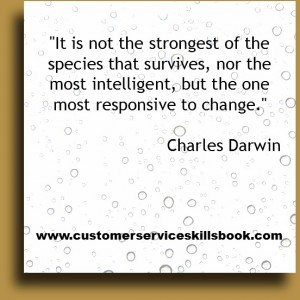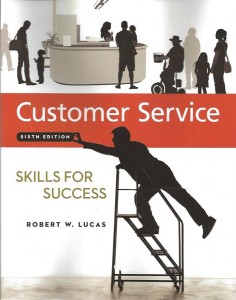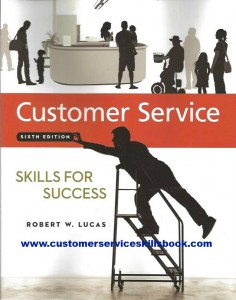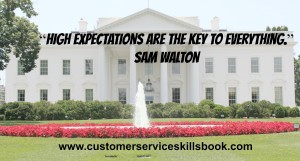Quote on Change – Charles Darwin
Change is constant in the world. This is especially true in the customer service profession. Recent decades have seen the advent of computerized and technology-based service delivery, shifts in economies, an evolving diverse customer population and many other factors that have required service providers and organizations to adapt.
Some organizations and individuals have made the transition fairly well intact, while others have fallen by the wayside.
Charles Darwin summed the situation up when he said:

“It is not the strongest of the species that survives,
nor the most intelligent,
but the one most responsive to change.”
Charles Darwin
Who was Charles Darwin?
Charles Robert Darwin was born on February 12, 1809, in The Mount House, Shrewsbury, United Kingdom. He was an English naturalist, geologist, and biologist. he received his formal education from Christ’s College in Cambridge. Charles Darwin was best known for his contributions to the science of evolution. During his lifetime he received many awards including Copley Medal, Royal Medal, and Wollaston Medal. His proposition that led to these awards was that all species of life have descended over time from common ancestors and are now widely accepted and considered a foundational concept in science. He past away on April 19, 1882, at his home called the Down House in Downe, United Kingdom.
Here are a few more quotes from Charles Darwin…
- “A man who dares to waste one hour of time has not discovered the value of life.” – Charles Darwin
- “Animals, whom we have made our slaves, we do not like to consider our equal.”
- “Ignorance more frequently begets confidence than does knowledge: it is those who know little, and not those who know much, who so positively assert that this or that problem will never be solved by science.” – Charles Darwin
- “Man tends to increase at a greater rate than his means of subsistence.” – Charles Darwin
- “The very essence of instinct is that it’s followed independently of reason.”
- “A man’s friendships are one of the best measures of his worth.” – Charles Darwin
- “At some future period, not very distant as measured by centuries, the civilized races of man will almost certainly exterminate, and replace the savage races throughout the world.”
- “I have called this principle, by which each slight variation, if useful, is preserved, by the term of Natural Selection.”
- “My mind seems to have become a kind of machine for grinding general laws out of large collections of facts.”
- “To kill an error is as good a service as, and sometimes even better than, the establishing of a new truth or fact.” – Charles Darwin
- “A moral being is one who is capable of reflecting on his past actions and their motives – of approving of some and disapproving of others.”
- “It is a cursed evil to any man to become as absorbed in any subject as I am in mine.” – Charles Darwin
- “On the ordinary view of each species having been independently created, we gain no scientific explanation.”
- “How paramount the future is to the present when one is surrounded by children.” – Charles Darwin
- “I love fools’ experiments. I am always making them.”
- “The highest possible stage in moral culture is when we recognize that we ought to control our thoughts.” – Charles Darwin
- “We must, however, acknowledge, as it seems to me, that man with all his noble qualities… still bears in his bodily frame the indelible stamp of his lowly origin.”
- “I am turned into a sort of machine for observing facts and grinding out conclusions.”
- “If the misery of the poor be caused not by the laws of nature, but by our institutions, great is our sin.” – Charles Darwin
Learn about Robert C. Lucas, a customer service guru, and award-winning author…
Bob Lucas has been a trainer, presenter, customer service expert, and adult educator for over four decades. He has written hundreds of articles on training, writing, self-publishing, and workplace learning skills and issues. He is also an award-winning author who has written thirty-seven books on topics such as, writing, relationships, customer service, brain-based learning, and creative training strategies, interpersonal communication, diversity, and supervisory skills. Additionally, he has contributed articles, chapters, and activities to eighteen compilation books. Bob retired from the U.S. Marine Corps in 1991 after twenty-two years of active and reserve service.
Make Money Writing Books: Proven Profit Making Strategies for Authors by Robert W. Lucas at Amazon.com.
The key to successfully making money as an author and/or self-publisher is to brand yourself and your company and to make yourself and your book(s) a household name. Part of this is face-to-face interaction with people at trade shows, library events, book readings, book store signings, blogging or guest blogging on a topic related to their book(s). Another strategy involves writing articles and other materials that show up online and are found when people search for a given topic related to a topic about which the author has written.
If you need help building an author platform, branding yourself and your book(s) or generating recognition for what you do, Make Money Writing Books will help. Bob’s popular book addresses a multitude of ideas and strategies that you can use to help sell more books and create residual and passive income streams. The tips outlined in the book are focused to help authors but apply to virtually any professional trying to increase personal and product recognition and visibility.
In my book Customer Service Skills for Success, I define customer service as “the ability of knowledgeable, capable, and enthusiastic employees to deliver products and services to their internal and external customers in a manner that satisfies identified and unidentified needs and ultimately results in positive word-of-mouth publicity and return business.”








